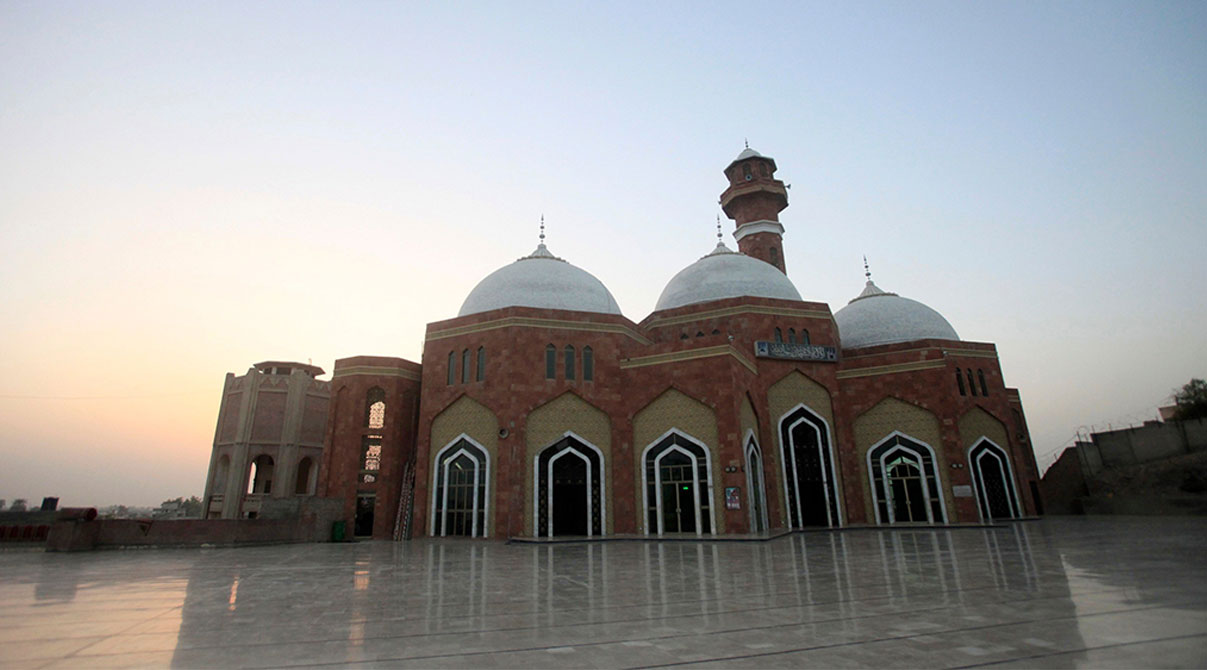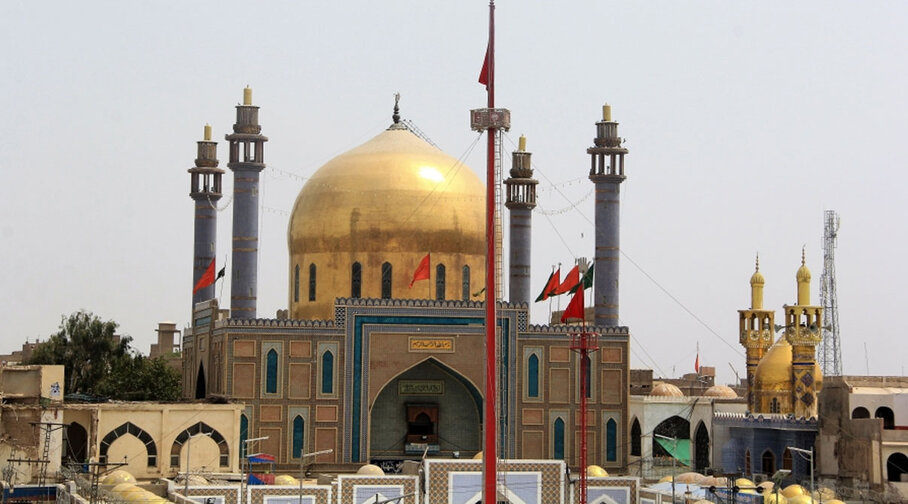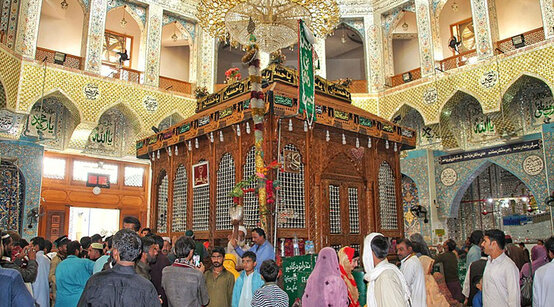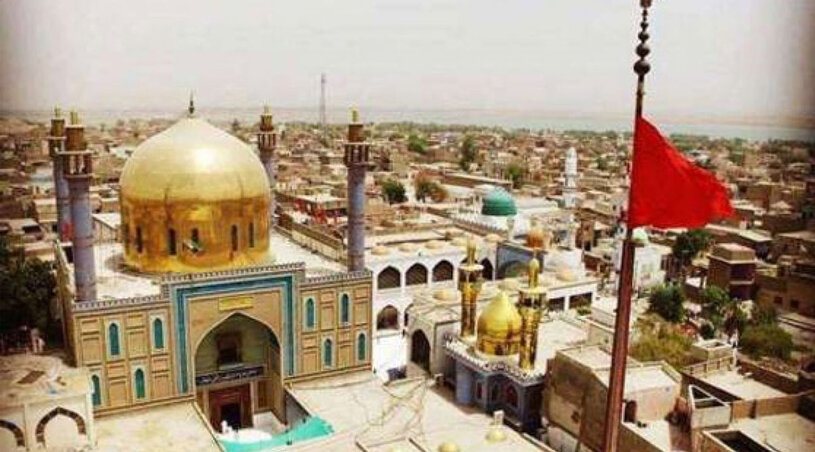Pakistan is home to many sufi saints. Pakistani sufis shaped the thinking and mind set of their era. Shahbaz Qalandar is one of the prominent sufis of his time. People recite His poems to express love, sadness, disappointment, yearning, and basically every emotion under the sun. Except for hate, of course.
Other famous Pakistani Sufis include:
- Wasif Ali Wasif
- Ali Hujwiri
- Bibi Jamal Khatun
- Bodla Bahar
- Fariduddin Ganjshakar
- Imam Ali-ul-Haq
Sindh: The land of Sufis
Sindh is the land of Sufis and saints that left a mark on its people. It includes saints such as Hazrat Lal Shahbaz qalandar, Geeay shah bakhsh, and Abdullah shah ghazi. Their shrines are in sehwan, Sukkur, and Karachi respectively. It is also home to the greatest mystic poets such as Sachal sar mast, Shah Abdul Latif Bhitai, and shah Abdul Karim. All the Sufi poets and saints gave the message of love, peace, and harmony, They believed that happiness is in brotherhood. Their message was not only for the people of Sindh, but it was universal.
Sindh saw an extended period of prosperity and abundance in the past, all thanks to the presence of the chosen people of God. However, in the past few decades, there has been an increased number of damaging incidents in Sindh that have shaken the social fabric. Karo Kari, kidnapping for ransom, thefts, and target killings have become a norm. To curb this, all the citizens of Pakistan, and especially Sindh, will need to come together and act on the stage of the Sufi saints who came hundreds of years ago to deliver something that stands the test of time.
Sindhi, Baloch, Pakhtoon, Urdu Speaking, and Punjabi communities are all one. And if we follow the ways of the Sufis, we will be able to overcome the discord. Rumi says,
Where there is ruin, there is hope for a treasure.
Related: Shrines in Pakistan That Are Architectural Landmarks
History of Shahbaz Qalandar
Shahbaz Qalandar, also known as Lal Shahbaz Qalandar, was born as Usman Marwandi in Maiwand, Afghanistan. He is one of the most famous sufi poets in the Pak-Afghan region. Although he was born in the north of the Indian subcontinent, his family originally came from Baghdad. They later on settled in Sindh. He played a pivotal role in converting the people of Sindh to Islam through his good conduct and excellent grip on the teachings of Islam.
He is famous for performing many miracles. Because of this, people consider him a holy figure all over Pakistan and Afghanistan, especially in Sindh. His asceticism and simpleness are revered. Dama Dam Mast Qalandar, a 19th-century nasheed is recited to honor Lal Shahbaz Qalandar. Hence, it is extremely popular in Pakistan.
Meaning of Lal Shahbaz Qalandar
People call him ‘Lal’ because he had a ruby-like glow on his forehead. Even people who met him for the first time knew who he was because of the ruby glow. His name is Shahbaz which indicates a noble and pure being. While Qalandar denotes that he was a wandering dervish. A spiritual man who has no home since the entirety of the earth is his home. People call him Jhulelal as well. The word Jhulelal means ‘red groom’. The legend says he was betrothed to marry his friend’s daughter. However, his friend died, and the friend’s son refused to give his sister’s hand to Lal Shahbaz Qalandar in marriage. This caused him extreme grief, hence the term.
Related: The Colorful Sindhi Hand Embroidery From The Land of Sufis
Lal Shahbaz Qalandar was the son of Syed Kabeeruddin. He lived during the rule of Ghaznavids and Ghauris in the region of Indus, which is the present-day Punjab in Pakistan. Shahbaz Qalander was a contemporary of Jalaluddin Rumi. He traveled extensively around the Muslim world before settling in Sehwan Sharif in Sindh. He was eventually buried here as well.
Meeting with Notable Sufis
There, he met with several notable sufis and mystics if his time to discuss the teachings and the spirit of Islam. In 1196, he met with Pir Haji Ismail Panhwar. He also met with Baha ud din Zakariya in Multan, who belonged to the Suhrawardi order. He met with Baba Fariduddin Ganjshakkar and Syed Jalaluduun Bukhari who were of the Chishti order. The friendship of these four sufis became so famous that they came to be known as Chahar Yar (4 friends). Evidence has been found which dictates that these four friends used to travel to various parts of present day sindh and punjab in Pakistan to propagate Islam.
Khanqah in Sehwan Sharif
When he arrived in Sehwan Sharif in 1251, he established a Khanqah, also known as the meeting house, where he was a religious teacher in Fuqhai Islam Madarrsah. He wrote Mizan us Surf, Aqd, Kism e Doyum, and Zubdah while teaching there. Lal Shahbaz Qalandar became a prolific scholar of various religions. He had a firm grip over many languages including Persian, Pashto, Arabic, sindhi, and turkish.
Shrine of Lal Shahbaz Qalandar
Lal Shahbaz Qalandars shrine is present in Sehwan Sharif. It is a prominent Sufi shrine in Pakistan, which attracts millions of visitors from all over the world annually. Shah Tughlaq constructed it in 1356. A major expansion of this shrine happened in 1639 by Mirza Jani. By the 20th century, it was one of the most popular shrines where people used to gather and commemorate the saint.
Renovations of the Shrine
The recent renovations of the shrine include portions fully enveloped in white marble, mirror work, and glazed tiles. The shrine has a gold-plated main door. Mohammad Reza Pahlavi gifted it. He was the Shah of Iran. The actual tomb of Lal Shahbaz Qalandar is present inside a central dome. Hundreds of diyas or oil lamps light the dome. Benazir Bhutto, the Prime Minister of Pakistan, ordered renovations of the shrine when the dome subsided in 1994.
The newly built dome was completed with 110 feet in height and 56 feet in diameter. The interior of the dome is decorated with tiles from Iran, while the outer surface is adorned with gold plated tiles from the UAE. The shrine’s dhamal courtyard was also built along with the dome. A CCTV camera was also to be installed, which had a radius of 4km outside the shrine. However, it was stolen from the local police station soon after it was delivered.
Future Renovations
The future renovations and constructions include the completion of a Sunni and Shia mosque. New lavatories, a shopping center, and an extensive resting place for travelers are also to be added as per Bhutto’s original plan.
The Suicide Attack on the Shrine
The shrine if Lal Shahbaz Qalandar suffered a deadly terrorist attack on 16 February 2017. The responsibility of the attack was claimed by the Islamic State of Iraq and the Levant – Khorasan. The suicide attacke resulted in the deaths of 88 people including women and children. The morning that followed the attack, the shrine’s caretaker continued with the routine tasks, defiant in the face of terrorism, he rang the bell at his usual 3:30 am. The meditative ceremony of the shrine, also known as the dhamal, continued as usual.
A few days later, several Pakistani artists came to the shrine to perform and take part in dhamal as a response to the radical islamist faction. A dhamal session was organized by Sheema Kermani to honor the victims of the suicide attack one year later.
Related: Exploring The Significance of Dance in Sufism
The Urs Festival of the Shrine
An annual Urs is also celebrated in the shrine to commemorate the death anniversary of lal shahbaz qalandar. It is held on the 18th of Shabaan every year. It is the 8th month of the muslim lunar calendar. The 769th urs was celebrated in the year 2021. This urs attracts more than a million pilgrims from all over the world.
Jhulelal Sangat Group
The Jhulelal sangat group is joined by visitors and performers that travel to the shrine in the form of a qafilah or a caravan.
These visitors offer tributes to the saint and ask for his intercession of their behold in return.
Mandali Group
Mandali, which is a group of folk singers, are invited from various parts of Pakistan to perform in the urs. Sindhi style wrestling, which is called Malakhro, is also presented in this urs. Cannabis consumption is common during the urs festivities. As the dhamal performers say that it helps them meditate and lose themselves.
The urs is a three day long festival where the narrow streets of sehwan are brimming with thousands of pilgrims wanting to get a glimpse of the gilded tomb and communicate with the saint. They present the mazar with flowers, garlands, and intricate chaddors as a tribute. These chaddors are long, flowy pieces of fabrics with Quranic ayats scribed in gold and silver threads. Singing, dancing, and humming of verses continues till morning. Viewing and taking part is an enriching experience for the devotees.
Dhamal: A Spiritual Ritual
It is a spiritual ritual which brings one closer to God. Large, barrel shaped drums or dholes are placed in the courtyard and on the rhythm of thes dholes the devotees dance their dhamal. Not only do people from all over Pakistan take part in this dhamal, but foreign tourists also experience and enjoy this part of divinity and spirituality.
Lal Shahbaz Qalandar’s Contributions to Sufism
Both Hindus and Muslims respect him alike. He has unmatched stature as a mystic, philologist, scholar and missionary. The legend says that when he arrived in the city of Sehwan to settle down and continue his work of propagating Islam, some fakirs in the city sent him a bowl of milk. It was filled to the brim. This indicated that Sehwan has no room for new fakirs, and that the existing are enough for it. Lal Shahbaz Qalandar returned the bowl with a flower floating in it. This story had spread far and wide by the time of his death in 1274, when he was 97 years old.
Life Journey of LaL Shahbaz Qalandar
Games and fun interest young boys. But, Lal Shahbaz Qalandar showed a strong inclination toward education and Islam. By the age of just seven, he memorized the Quran by heart. When he was 20, he entered in the circle of Qalandar order of Sufism. Qalandar is a Sufi wandering dervish who leads a simple life. He wears clothes fit for a beggar. Also, he lives in poverty and dearth. He moved from one place to another, indicating that he has no permanent home. Qalandars consider the blue sky as the roof on their head, and the entire earth their temporary home.
Related: The 12th Annual Mystic Music Sufi Festival: The Mysticism of Sufis in the World of Today
Arrival in Multan
Lal Shahbaz Qalandar traveled and wandered in the Middle East in the search of truth. From there he arrived in the land of Sindh from Baghdad. He took to dasht-e-makkran to get to the city of sehwan. He had achieved his sufi glory and fame by the time he reached Multan in 1263. The people of Multan wanted him to make Multan his permanent abode in the temporary world, because of his knowledge of religions and his miracles. But he refused and chose to travel to Sehwan, which was a popular place of worship and reverence for Hindus. He stayed in Sehwan for six years, where he lived in the outskirts of the city in the trunk of a tree.
Stay in Sehwan
He used his stay in Sehwan to spread the light of Islam and providing counsel to hundreds of people who came to him with their questions and problems. Since his tomb is located in Sehwan as well. Hundreds of devotees flock to sehwan every day, but the number swells to thousands on Thursdays and urs festivities. Sehwan is a focal point for pilgrims from all over the world. Lal Shahbaz Qalandar was the patron saint for the sad and lonely. He was a dynamic sufi who was a doorway between this world and eternal life.